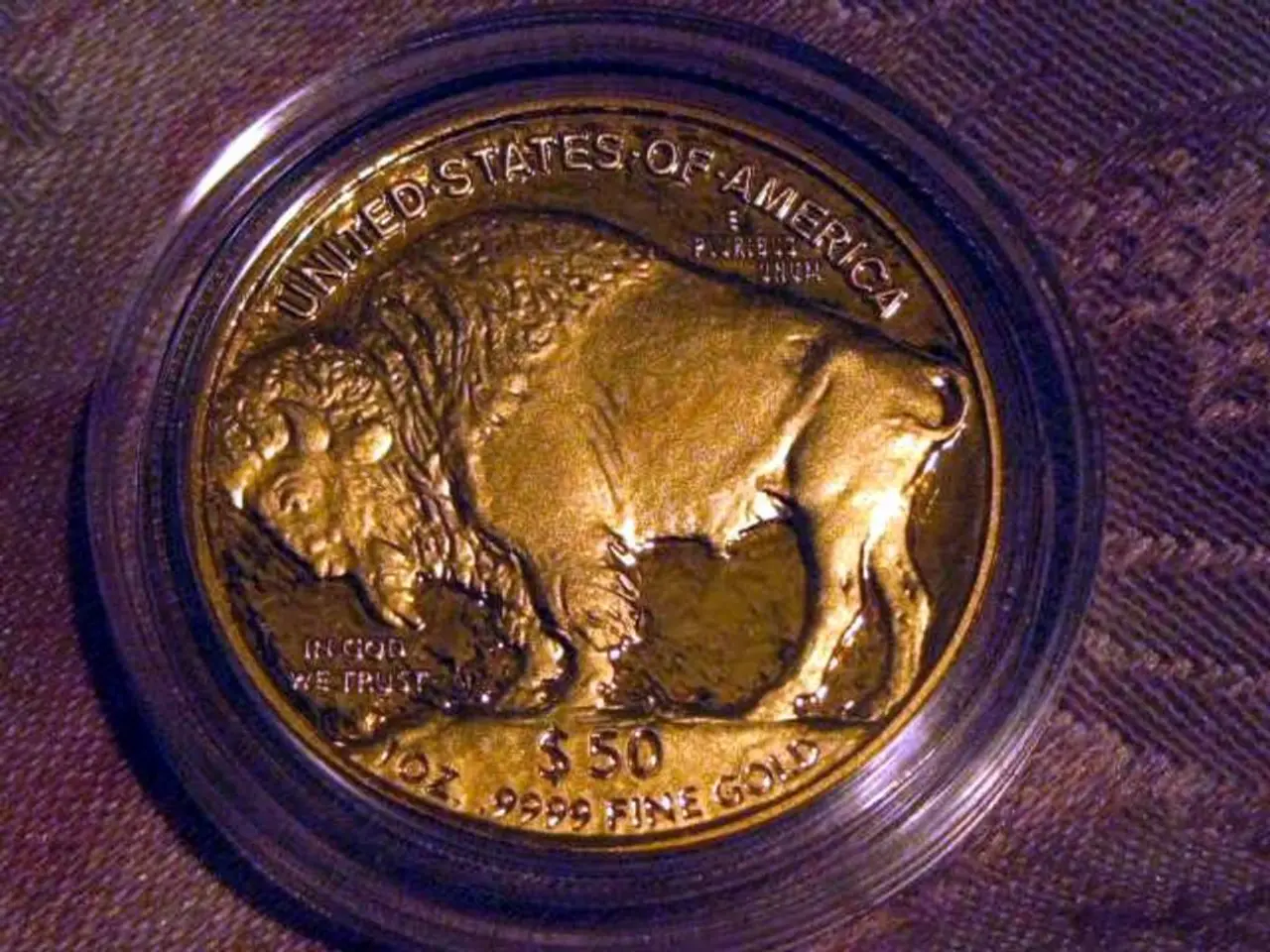Following Liberation Day: Gold prices accelerate, exchange rates fluctuate, and currency adjustments occur
Following the proclamation of Liberation Day by President Donald Trump on 2nd April, the international monetary order has witnessed significant shifts, with important implications for US policy, the dollar's standing, gold demand, and Europe's potential leadership. Two prominent figures, Yara Aziz, a senior economist at OMFIF, and Max Castelli, head of strategy for sovereign institutions at UBS Asset Management, have been at the forefront of these discussions.
**US Policy Shifts and Dollar Role:** The early April trade policy actions by the US government caused a spike in bond yields and increased uncertainty about the dollar, leading foreign investors to reassess their holdings of US assets. This trend suggests the moves in early April could be the start of a broader adjustment over coming quarters, rather than a one-off episode. The US dollar, while still dominant, has declined about 10% year-to-date, which is unusual given its traditional role as a safe haven currency. This weakening partly reflects concerns over inflation and rising US debt issuance to fund budget deficits, which have dampened foreign demand for Treasuries.
**De-dollarization and Gold Demand:** Central banks worldwide have been gradually diversifying their foreign exchange reserves away from the dollar, with the USD share in FX reserves dropping to just under 60%, a two-decade low. A major trend accompanying de-dollarization is the rising demand for gold as an alternative reserve asset. Emerging market central banks such as China, Russia, and Türkiye have significantly increased gold purchases over the last decade, driving gold's share in reserves higher—currently about 9% for emerging markets (up from 4% a decade ago) and 20% for developed markets. This intensified demand supports a strong gold bull market, with prices forecast to potentially reach $4,000 per ounce by mid-2026.
**Europe's Potential Leadership:** Europe, particularly through the euro, is seen as a possible alternative in the global reserve currency system. However, the eurozone faces significant challenges in promoting its global role. Proposals for deepening eurozone capital markets or introducing an ECB digital reserve currency face significant hurdles, making Europe’s path to reserve currency leadership uncertain and gradual at best.
Yara Aziz and Max Castelli have expressed concerns about the potential for a shift in US policy towards reserve currencies, with such shifts having significant implications for global markets. Aziz warns that the transition to a new reserve system could be complex and fraught with challenges. Castelli, on the other hand, expresses optimism about the EU's potential to lead in the development of a new global reserve system, predicting that if the dollar's role as a global reserve currency is weakened, other currencies like the euro could gain prominence.
In summary, the global reserve landscape is undergoing a cautious but ongoing reconfiguration, with the US dollar facing growing headwinds, central banks and investors increasing gold holdings, and Europe offering potential as a reserve currency alternative but confronting major structural and political obstacles. These dynamics suggest a slow secular shift in the global reserve system rather than an abrupt transition.
- Given the potential shifts in US policy towards reserve currencies, Yara Aziz, a senior economist at OMFIF, has voiced concerns about the complex and challenging nature of a transition to a new reserve system.
- Max Castelli, head of strategy for sovereign institutions at UBS Asset Management, expresses optimism about the European Union's potential to lead in the development of a new global reserve system, predicting that a weakened US dollar could pave the way for other currencies, such as the euro, to gain prominence.
- The growing interest in gold as an alternative reserve asset, driven by central banks diversifying their foreign exchange reserves away from the US dollar, supports a strong gold bull market, with prices forecast to potentially reach $4,000 per ounce by mid-2026.
- AI and podcasts are useful tools for keeping up with the latest discussions and insights on these shifts, with Yara Aziz and Max Castelli being key voices in the debate surrounding US policy, the dollar's standing, gold demand, and Europe's potential leadership in the global reserve currency system.




